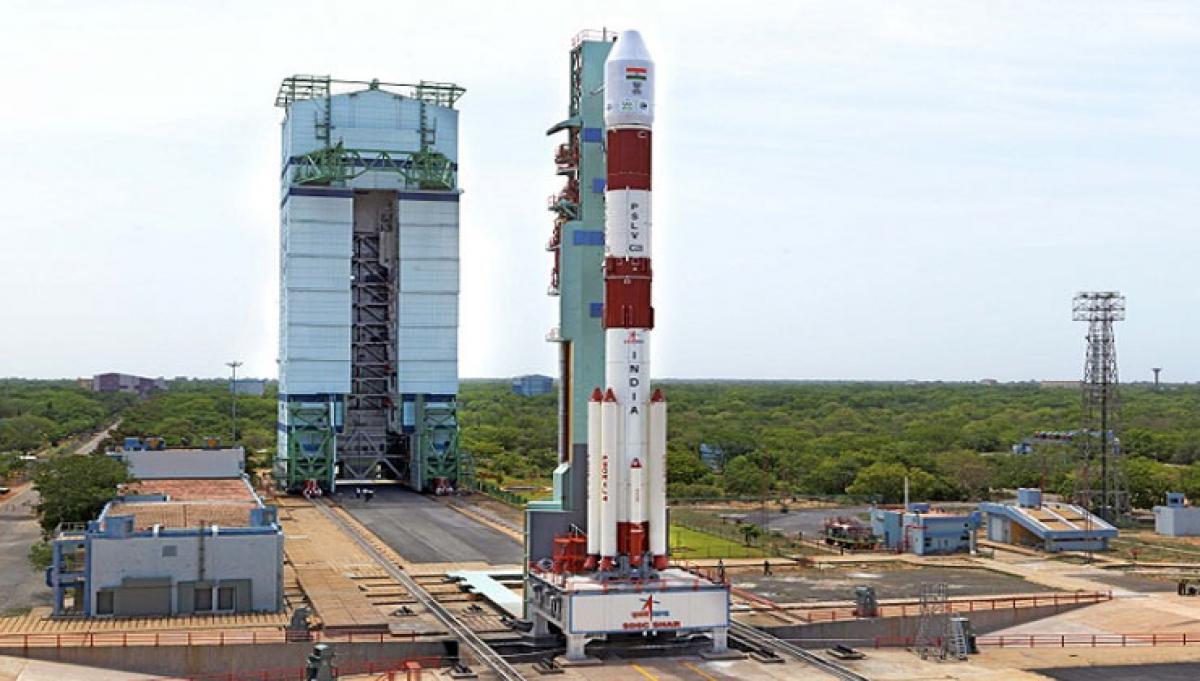Live
- 15 Years of Transformation: Oakridge International School, Bachupally Celebrates Founder's Day
- Takshasila celebrates annual day
- 3 months after opening, Morampudi Flyover remains incomplete
- Skill enhancement session organised for school teachers
- Tribal Ashram school girl students fall sick again
- Grand finale of Innovation marathon begins at IIT Tirupati
- Ensure no inconvenience to bus passengers: MLA
- Being overweight surpasses smoking as Australia's leading health risk
- Rush of Devotees at Tirumala normal, to take six hours for darshans
- Thiruvannamalai turns a major revenue earner for RTC
Just In

x
Highlights
GSAT-6 Mmilitary Satellite Put In Its Orbital Slot. The Indian space agency on Sunday said it had successfully positioned the country\'s military communication satellite GSAT-6 in its orbital slot.
Chennai: The Indian space agency on Sunday said it had successfully positioned the country's military communication satellite GSAT-6 in its orbital slot.
.jpg) According to Indian Space Research Organisation (ISRO), GSAT 6 has been successfully positioned in its orbital slot of 83 degrees East and co-located with INSAT 4A, GSAT 12, GAAT 10 and IRNSS1C on Sunday morning, after carrying out four drift arresting manoeuvres.
According to Indian Space Research Organisation (ISRO), GSAT 6 has been successfully positioned in its orbital slot of 83 degrees East and co-located with INSAT 4A, GSAT 12, GAAT 10 and IRNSS1C on Sunday morning, after carrying out four drift arresting manoeuvres.The satellite was launched by India's heavy rocket geosynchronous satellite launch vehicle-Mark II (GSLV) and put into geo transfer orbit (GTO) on August 27.
One of the advanced features of GSAT-6 satellite is its antenna - the largest satellite antenna realised by ISRO and utilised for five spot beams over the Indian mainland, which exploit the frequency reuse scheme to increase frequency spectrum utilisation efficiency.
The satellite provides communication through five spot beams in S-band and a national beam in C-band for strategic users.
The satellite's life expectancy is nine years.
ISRO is planning to launch 2,200 kg INSAT-3DR meteorological satellite next July with its GSLV rocket.
According to ISRO, with two back-to-back successful missions carrying indigenous cryogenic stage, the GSLV has matured into a reliable launch vehicle and has paved the way for its future operational missions, providing India self-sufficiency in launching higher capacity satellites into geosynchronous transfer orbit (GTO).
The 2016 July launch would be followed by the GSAT-9 satellite launch in May 2017.
The prestigious Chandrayaan-2 Mission is designated to be launched by GSLV in 2017-18 time frame.
According to ISRO, the GSLV is well on its way towards international and commercial operations.
Work is already in progress on the joint effort with NASA for the launch of NISAR satellite into a polar orbit by 2020-21. This mission will demonstrate the versatility of the GSLV for launch into various orbits.
While technical criticalities of the complex GSLV system have been overcome, challenges are being taken up for improving the payload capability from the present 2,117 kg to the design target of 2500 kg, ISRO said.
Detailed studies are in progress, addressing the various ways of achieving this target, said the Indian space agency.

Next Story
More Stories
ADVERTISEMENT
© 2024 Hyderabad Media House Limited/The Hans India. All rights reserved. Powered by hocalwire.com







